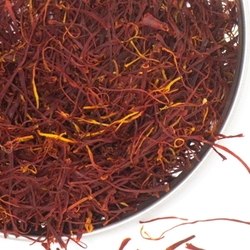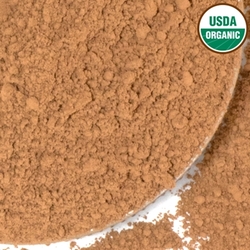Sweet and Bitter Flavors

We love food trends. They mean that something new and exciting is coming to the kitchen for us to try out. Some stand the test of time, while others fade off into the background. Some of the flavor trends that we never want to go away include sweet and sour, sweet and salty and sweet heat. Thanks to the ever evolving melting pot (pun intended) of America we may be noticing a new flavor trend emerging rather shortly. This trend is using sweet and bitter flavors together to compliment and balance each other and separately in more nontraditional dishes.
These ingredients are used to enhance or balance both sweet and savory flavors. This flavor combination is already very popular around the world in regions such as India, the Middle East and Africa where sweet flavors are used in contrast with bitter ingredients.
Sweet Flavors
I think it's safe to say that almost everyone on the planet can identify a sweet flavor, and more often than not we associate it with sugar. But sweet flavors are so much more than sugar. Flavors such as Vanilla and ghee can provide a sweet flavor to dishes without using sugar, and can also be used to even out tart flavors.
Vanilla Beans and Extract
Organic Pure Vanilla Extract, the second most expensive spice after saffron, is used in cuisines around the world. Vanilla beans come from the fruit of the orchid vine and must be pollinated and harvested by hand. In the United States and Europe, vanilla is used mostly to make dessert dishes such as cakes, cookies, sweet sauces and ice cream. Vanilla was also used by pre-Columbian Indians in combination with savory foods such as corn, annatto, chocolate and chiles. It can also be used to balance strong flavors in salsas, chutneys and curries.
Ghee
Ghee, also known as clarified butter, is made by simmering butter, which is churned from cream made from cow's milk. While not used as often as many of these other ingredients in the US, ghee is an essential ingredient in Indian and South Asian Cuisines. In India, ghee is dabbed on roti (similar to a flatbread or tortilla). In West Bengal and Bangladesh, ghee is used in making a dish called kichdi, which is an evening meal of rice and lentils cooked in curry made from yogurt, cumin seeds, curry leaves, ghee, corn flour, turmeric, garlic and salt.
Ghee is used by many instead of oil when making curries because it provides a much tastier flavor profile. Ghee is also ideal to use as the fat for deep frying because it has a higher smoke point than many vegetable oils.
Bitter Flavors
Bitter flavors are a little more complicated than sweet flavors. Unlike sweet flavors, bitter flavors are very similar to one of the other five flavors that we can distinguish, sour. Bitter flavors can be traced back to the very beginnings of scavenging for food. At that time, bitter flavors were used to identify foods that were most likely poisonous (although we know now that not all of them are). Foods range on a scale of bitterness and it has been found that not everyone experiences bitter flavors in the same way. This is very similar to how some people enjoy the taste of Cilantro, while others cannot stand it. Bitter flavors can be balanced or neutralized to create a pleasant flavor in sweet and savory dishes. This can be done by balancing them with a sweet flavor or neutralizing them with salt (the same way dark chocolate is neutralized by sea salt).
Amchur
Amchur powder, also known as dried mango powder, is a tart flavored powder that is used in Indian cooking. The flavor profile is fruity with a distinct tanginess and can be used in savory dishes such as potato pakoras (potato fritters), vegetable curries, soups, stews, chutneys and samosa fillings. Amchur also provides a dry acidity where extra moisture is not needed. We use Amchur in one of our most popular spice blends, Habanero Mango Chicken Rub.
Amchur can also be used in sweet dishes with fresh fruit such as plums, pineapples and guavas. This will give you a great combination of the fruit's natural sweetness and a little tanginess from the Amchur. Any type of chutney can be enhanced with a pinch or two of amchur, along with marinades, salad dressings and sweet fruit sauces.
Cacao and Cacao Nibs
Cacao is one of our favorite super foods. It can be added to smoothies, and cocoa nibs are an almost addictive snack. Cacao is naturally bitter because it contains tannins (the same element that makes some wines taste dry). In its natural form, cacao can be used in savory dishes such as Mexican moles and chilis. Once cacao is fermented, it becomes less bitter and can be used in desserts, baked goods and beverages.
I can't really think of a sweet dish that wouldn't be enhanced by a little cacao. One of my favorite combinations for Cacao is sweet strawberry wine. When dropped in a bottle and left to sit, this will create a flavor very similar to a chocolate covered strawberry. Cacao is also delicious when it is paired with fresh or dried fruits, nuts and granola. It can also be used in any dish where mint or vanilla is playing a prominent role in a dish.
Coffee
Originally, coffee was used strictly as a food instead of a drink like we use today. In Ethiopia, coffee berries were wrapped in animal fat to make food balls. Today, coffee can enhance savory foods such as salsas, dark curries, sambals and even poultry.
Coffee is also used around the world in combination with sweet flavors to create beverages, desserts and ice creams. The most popular flavors that coffee is mixed with are vanilla, cardamom, cinnamon and dried fruit.
We have had the opportunity to try a number of these flavor combinations and they are nothing short of amazing. If you are looking to try a flavor combination that is new and interesting, one of these is your best bet!
Related Posts
How to Save Food: Fixing Flavors
Exotic Spices
Flavor Characteristics of Spices
Craft Brewers Favorite Beer Spices



